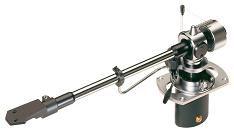

I couldn't believe how quiet this thing runs in the grooves. I've had the table up and running with the SME M2 for a week now, and I can honestly say that this arm has a magical way of extracting detail from the grooves while suppressing noise. But after having all of these features (on an entry-level arm no less), I will be hard pressed to do without them if/when considering future arm upgrades.Īll this would be worthless is the sound didn't follow the design. I've never owned one before here recently. If this seems like a plug for SME arms, I guess it sort of is. It took a few attempts, but I eventually got it perfect.
MOUNTING AN SME TONEARM OFFLINE
However with the use of a small mirror on the platter under the SME headshell, I was able to assure that my AT33PTG/II was not offline when the stylus was presented to the groove. Mounting your cartridge to a headshell that is fixed in place like the Encounter is a fine concept if your cartridge has a perfectly aligned cantilever. I never considered how important being able to adjust this was until my SME M2 arrived. After using such a configuration, I've heard nothing to suggest that it is any worse than a soldered cable design from tip to end. At least if you have a problem with that section, you can easily replace it without having to do a total re-wire (plus you can play around with cable upgrades as well). Consider a tonearm that accepts a separate cable connection at the base of the tonearm (like the SME M2).

However, if you ever have a solder point go bad.you're in real trouble. There are many that champion the one-piece cable Origin Live uses as it reduces the number of connection points and avoids RCA/DIN connections. Origin Live should have kept a threaded design. It was almost exactly at my destination tracking force of 2 just required a bit of a nudge after that (probably because I was close to "zero", but not exactly at zero on the initial balance).
MOUNTING AN SME TONEARM FULL
Once I had the arm at "zero" balance, I gave the counter-weight two full turns. Each quarter turns creates 1/4 gram of tracking force. The SME M2 uses a threaded rod and the counter-weight is marked with a letter (A, B, C & D) every quarter turn. The result? That precise weight that you achieved when using your nifty cartridge gauge is now gone. I can't stress enough what a pain-in-the-ass it is to set the tracking force as the weight inevitably moves as you are locking it to the arm. Origin Live has chosen to use an allen screw as a means to lock the counter-weight in place as the tail has no threads. Many original Rega arms come with a threaded tail which the counter-weight screws onto and can be moved back and forth by twisting it one way or another. Once you set the VTF, you simply slide one end of the open loom over the correct VTF notch and you're done. Each notch corresponds to a VTF weight (see below). Unfortunately the Origin Live Encounter only has a smooth wire that requires one end of the anti-skating mechanism to be locked to it via an allen screw - no markings, just set it and try it (and yes, it is possible for the locking ball to slide off the back of the wire and fall to the ground). Most will tell you to adjust anti-skating by ear or with a test record. The SME M2 is mounted to the top of the arm board and has a separate locking collar to adjust the angle of the tonearm in relation to the platter. Since the collar used to secure and adjust the arm angle of the OL Encounter to the armboard is mounted under the arm board (and the manufacturer suggests only finger tightening for best sound), it makes it almost impossible to keep the arm locked in place when returning it to the arm rest unless your willing to take tools to it. For those thinking of acquiring an Origin Live arm, you might want to consider what I feel are their weak points compared to the SME design: But it wasn't until I recently purchased a SME M2 9" arm that I realized several of the short-comings of the Origin Live design.

The look and the sound of this arm are certainly not bad - just the opposite in fact. This is being written from someone who has spent a couple of years now with an Origin Live Encounter arm on my Michell Gyrodec SE.


 0 kommentar(er)
0 kommentar(er)
